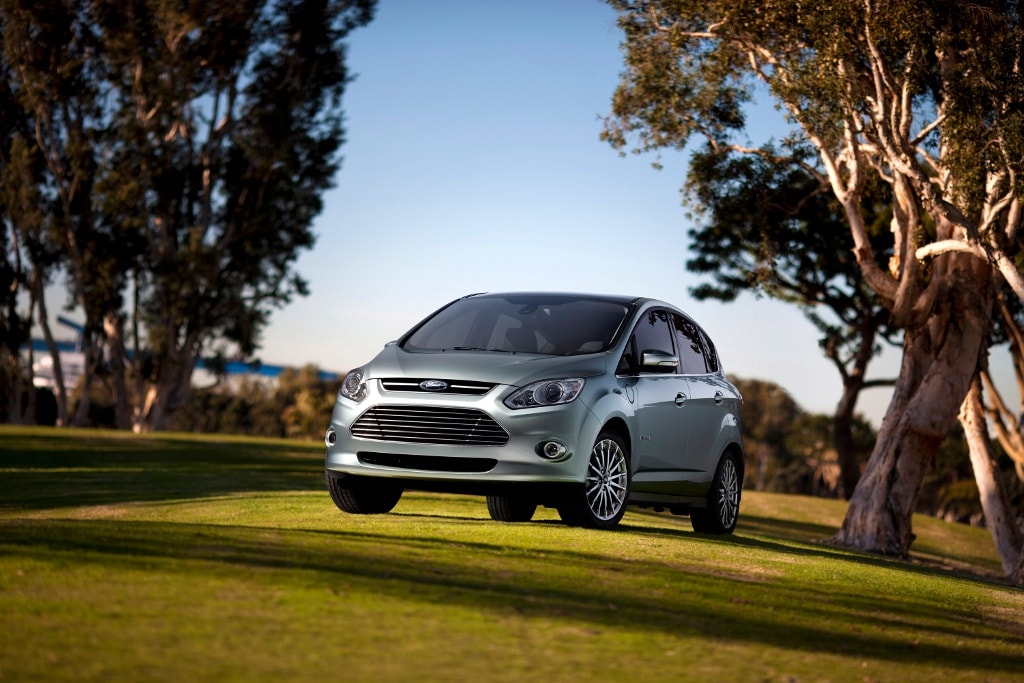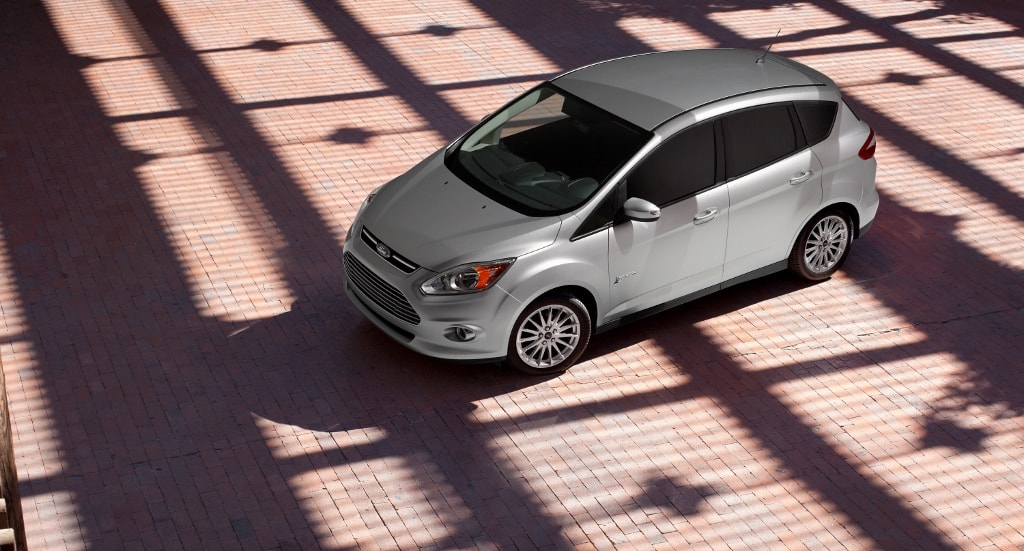The year started with a bang for American manufacturer Ford, who presented last week, during the Consumer Electronics Show in Las Vegas the electric version of the Ford Focus. But, just as promised in the past year or so, the Focus EV is only the beginning of a wider strategy meant to make Ford an important player on the green vehicles market.
Two other vehicles meant as a tool to protect the environment, the consumers' pockets and the car maker's compliance with the new fuel consumption standards were presented today: the C-Max Energi and the C-Max Hybrid.
The Energi is the plug-in hybrid version of the current generation C-Max, coming to the world with the stated goal of achieving Advanced Technology Partial Zero Emissions Vehicle status (AT-PZEV). Powered by a high-voltage lithium-ion battery and electric traction motor and a high-efficiency Atkinson-cycle gasoline engine, the Energi will become Ford's first PHEV.
The Energi uses the electric motors on start-up, operating in charge-depletion mode to provide a yet unspecified electric driving range (for the record, Ford plans to make the car achieve more than 500 miles or 800 kilometers of driving range using the battery and engine, making it a better choice than the Chevrolet Volt).
When the battery runs out of juice, the vehicle automatically switches to charge-sustaining hybrid mode. The speed which can be attained using the electric motor is hoped to be higher than 47 mph (75 km/h).
Charging the batteries of the vehicle can be done overnight, using a 120V power supply. The batteries also draw power from the engine of the car, while it is in use, to propel the vehicle.
As for the C-Max hybrid, nothing spectacular there. The car will operate just like any other hybrid, being powered, just like the Energi, by lithium-ion battery systems developed and assembled in-house by Ford in Michigan.
Both models will be deployed in North America in the next two years, coming from Ford's plant in Wayne, Michigan, as part of Ford's plan to launch 10 new models or derivatives of its existing vehicles. For Europe, the vehicles will be built at Ford’s plant in Valencia, Spain, starting 2013.
Two other vehicles meant as a tool to protect the environment, the consumers' pockets and the car maker's compliance with the new fuel consumption standards were presented today: the C-Max Energi and the C-Max Hybrid.
The Energi is the plug-in hybrid version of the current generation C-Max, coming to the world with the stated goal of achieving Advanced Technology Partial Zero Emissions Vehicle status (AT-PZEV). Powered by a high-voltage lithium-ion battery and electric traction motor and a high-efficiency Atkinson-cycle gasoline engine, the Energi will become Ford's first PHEV.
The Energi uses the electric motors on start-up, operating in charge-depletion mode to provide a yet unspecified electric driving range (for the record, Ford plans to make the car achieve more than 500 miles or 800 kilometers of driving range using the battery and engine, making it a better choice than the Chevrolet Volt).
When the battery runs out of juice, the vehicle automatically switches to charge-sustaining hybrid mode. The speed which can be attained using the electric motor is hoped to be higher than 47 mph (75 km/h).
Charging the batteries of the vehicle can be done overnight, using a 120V power supply. The batteries also draw power from the engine of the car, while it is in use, to propel the vehicle.
As for the C-Max hybrid, nothing spectacular there. The car will operate just like any other hybrid, being powered, just like the Energi, by lithium-ion battery systems developed and assembled in-house by Ford in Michigan.
Both models will be deployed in North America in the next two years, coming from Ford's plant in Wayne, Michigan, as part of Ford's plan to launch 10 new models or derivatives of its existing vehicles. For Europe, the vehicles will be built at Ford’s plant in Valencia, Spain, starting 2013.














